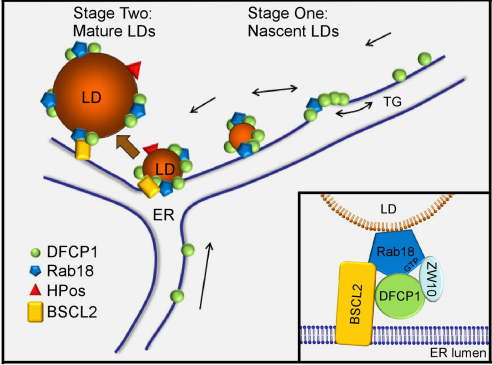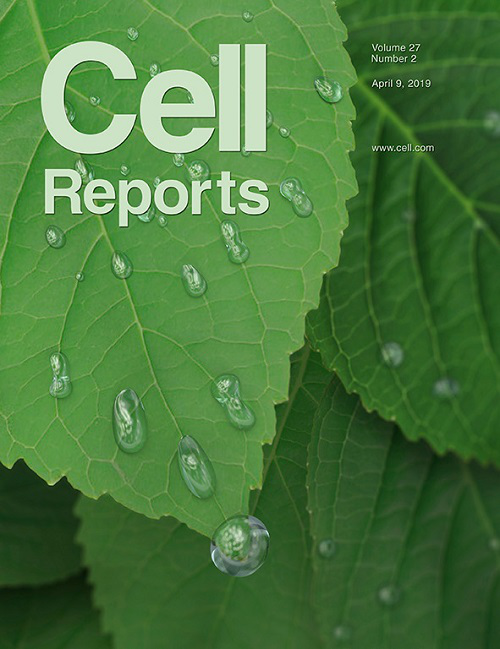The ER-Localized Protein DFCP1 Modulates ER-Lipid Droplet Contact Formation
On April 9, 2019, Dr. ZHANG Hong's lab published a research article entitled “The ER-Localized Protein DFCP1 Modulates ER-Lipid Droplet Contact Formation” in Cell Reports. This paper is shown as a cover story.
This study used super-resolution GI-SIM imaging to reveal that during LD biogenesis, the ER-localized protein DFCP1 redistributes to nascent LD structures, which further fuse to form expanding LDs. DFCP1 acts as a Rab18 effector for LD localization and interacts with the Rab18-ZW10 complex to mediate ER-LD contact formation. Previous studies have shown that upon autophagy induction, the FYVE-domain-containing ER-localized protein DFCP1 migrates to omegasomes, which act as platforms for autophagosome formation. DFCP1 does not move to IMs, and it migrates back to the ER when the closed autophagosome is formed (Axe et al., 2008). Here, using a newly developed super-resolution live-cell imaging technique, the authors demonstrated that upon LD induction, DFCP1 forms small puncta on the ER in a manner that depends on TG synthesis. These DFCP1-labeled nascent structures move along the ER and fuse to form an expanding LD, which further grows into a large LD. The ER-resident transmembrane protein BSCL2, which is mutated in human Berardinelli-Seip congenital lipodystrophy 2, is required for fusion and growth of DFCP1-labeled nascent structures. DFCP1 acts as a Rab18 effector and interacts with the Rab18-ZW10 complex to mediate ER-LD contact for LD growth. This study reveals that initial LD growth involves fusion of nascent DFCP1-labeled structures, and LD expansion is modulated by DFCP1-mediated ER-LD contact formation.

DFCP1 modulates ER-Lipid Droplet contact to control the growth of Lipid Droplets
(Imaged by Dr. Zhang Hong's group)

Cover image
Dr. ZHANG Hong and Dr. LI Dong from the Institute of Biophysics are the corresponding authors. Dr. LI Dongfang from Dr. ZHANG Hong's lab and Dr. ZHAO Yan from University of Massachusetts Medical School are the co-first authors of this paper. Dr. LIU Pingsheng from Institute of Biophysics also supervised this work. This work was supported by grants to H.Z. from the Beijing Municipal Science and Technology Committee, NSFC, the Strategic Priority Research Program of the Chinese Academy of Sciences (CAS), the Key Research Program of Frontier Sciences, and also the Fountain-Valley Life Sciences Fund of the University of Chinese Academy of Sciences Education Foundation.
Article Link: https://www.cell.com/cell-reports/fulltext/S2211-1247(19)30341-9
Contact: Hong Zhang
Institute of Biophysics, Chinese Academy of Sciences
Beijing 100101,China
Phone: 86-10-64848238
Email: hongzhang@ibp.ac.cn
(Reported by Dr. Zhang Hong's group)

